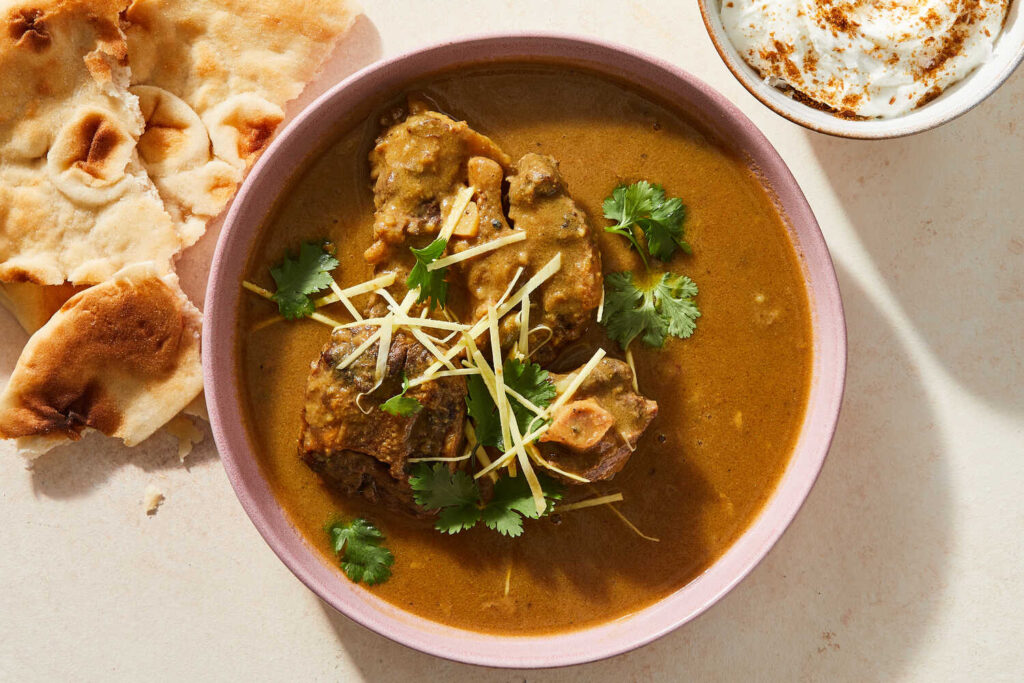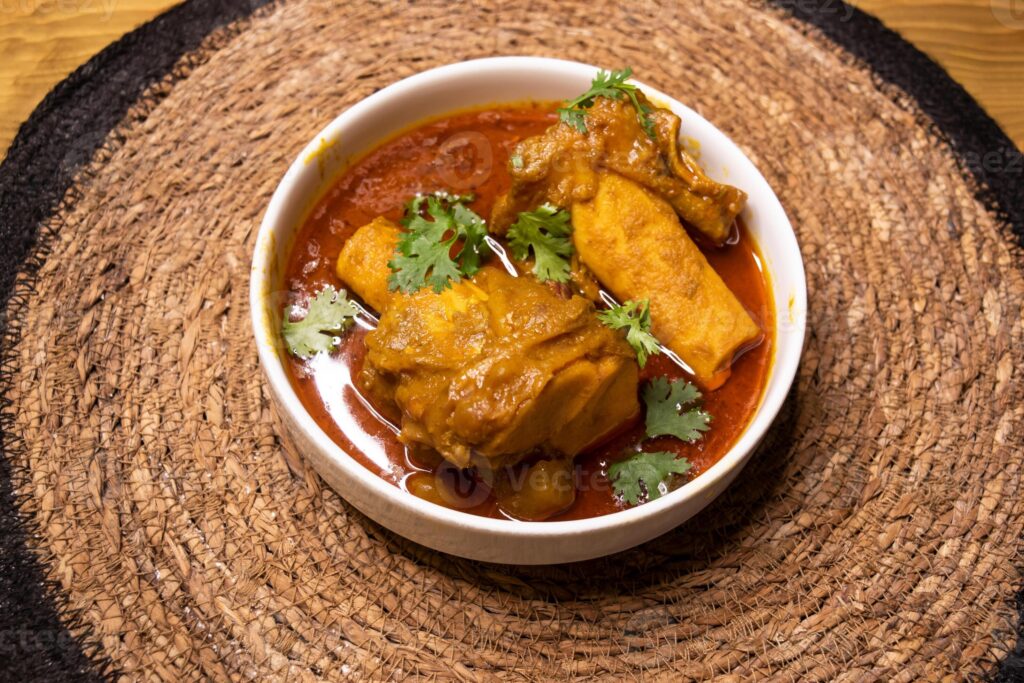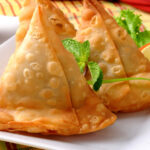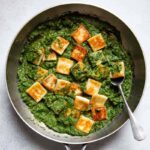A Delicious Nihari meal that is made to be turned into ritual carnivorous rage, running fingers over the flattened bits causing damage one piece at a time. Of all the dishes in our diverse South Asian cuisine, Delicious Nihari holds one of the highest places on that delicious dish list with its rich flavor profile and heady aroma. Delicious Nihari (Indian subcontinent) — This is a slow-cooked stew with beef or lamb, cooked over several hours to produce falling-apart pieces of meat, all simmered in an intense spice broth. In this article, we talk about the soul of nihari here in India — everything from how its made to what it means culturally.
Origins and Significance
History This dish hails from the Mughal era, an extravagant period in which people were experimenting with spices. Delicious Nihari is believed to mean day or morning in Arabic and the name probably refers back to a time when this braise was typically cooked overnight on low heat in order that it would be ready by dawn after Fajr prayer. Nihari was prepared and left to cook overnight, served as a Nashat (morning food) extremely heavy on the gut; really filling.
Ingredients and Preparation Delicious Nihari
Delicious Nihari is humble in its core ingredients but complex and comforting the way the flavors are layered together. Key components include: Meat: This recipe calls for beef or mutton meat and its best form is in cubes. The broth is often a prepared by cooking meat on the bone.

Spices: Spices form the key element that makes this dish so flavors leaving behind a perfect blend which lingers on your taste buds. Inclusion of several spices, like cumin, coriander and turmeric together with cloves, black pepper + cardamom is found commonly. Delicious Nihari masala, a spice mix which is easily available ready-made or can be made in home as well.
Ginger + garlic: Freshly grated ginger plus freshly minced garlic, for layers of warmth and spice.
Onions: Onions are frequently caramelized by being browned to give the stew a deep, nutty backbone.
All-purpose flour: Just a small amount is needed to help thicken the gravy and give it that smooth silky finish. Bone Marrow In standard recipes, bone marrow is added for flavor and a velvety feel to the broth. Delicious Nihari, it feels as if nihari has been made with love. First the meat is browned with onions and ginger and garlic and yogurt.

The meat will then be boiled in water or broth for a few hours to become soft and imbibe the flavors. The resulting texture and flavor of the dish is affected by both processes; nihari masala, a spice blend consumed in India, and starchy thickener based on flour. Slow cooking Nihari is a traditional way to make it, as slow-cooking through the night brings out wonderful flavor in it. The end result is a fragrant, soupy stew with succulent beef and tasty gravy.
Popular Variations
Delicious Nihari is prepared differently in every region and with each family carrying out its own twist. Here the serves are a little different;
Beef Nihari: The classic version with beef chunks in a spicy gravy. The beef has a melt in your mouth kind of texture as it is slow cooked. Mutton Nihari: This uses mutton which being strong in flavor, needs more cooking time than beef.
Chicken Nihari: A narrow-gauge version of nihari can be made with chicken instead [meat]. You can certainly substitute chicken for beef in nihari, it cooks faster but still has that deep flavor. For Serving and Accompaniments Nihari is also had with a barrage of accompaniments that adds value to the meal as well. Common sides include: Naan or Roti some freshly baked bread to sop up the gravy is all you need. Chappal – Flat bread goes well with the stew.

Garnishes: Delicious Nihari is often garnished with fresh cilantro; sliced ginger and a spritz of lime juice adds more freshness. Cultural Importance Nahari has a unique and long-standing place in South Asian culture, depicting warmth along the tradition of hospitality. It is also eaten in various familial and ceremonial contexts. The dish mirrors a rich culinary tradition in the region and remains an integral element of communal dining.
Conclusion
Delicious Nihari is not just a stew, rather it symbolizes the tradition and soul of South Asian cuisine. A descendent from the Mughal era, plenty of masala and gosht with a softer meat are what has nihari attracting food enthusiasts not just in Pakistan but across continents. Whether consumed as a traditional meal with loved ones or showcased at banquets nihari stands out for its range and substance in South Asian gastro
What is special about Nihari?
A popular meal with a long history, nihari is made with skill to feed big crowds. In a shab degh, a large pot that represents cooking at night, it is tenderly cooked all night long. The beef cooks softly over a low flame for 6 to 8 hours, until it tenderly disintegrates.
Which country is famous for Nihari?
Muslims in Delhi, Bhopal, and Lucknow have a traditional meal called nihari. Many Muslims from northern India who spoke Urdu moved to Karachi and opened eateries when British India was divided and Pakistan was created in 1947. Nihari quickly spread throughout Pakistan after becoming an enormous success in Karachi.
What is the flavor of Nihari?
Nihari is spicy and thin, with a distinct fennel or ‘anise’ flavor. usually contains bones. Fenugreek, nigella, cumin, mustard seeds, coriander, turmeric, (hing, amchur), chile, and a little vinegar or yogurt are the ingredients that make up Achari. frequently includes chopped bell peppers.
What is the national dish of nihari?
Originally from Delhi in the 18th century, this delicious pork stew was a mainstay of Mughal breakfasts. “Nihari” is derived from the Arabic word “nahar,” which means “morning.” It gave you energy for the day and was traditionally slow-cooked with bone marrow, spices, and delicate beef or lamb.
What animal is nihari?
Although cow shank was originally used to make nihari, lamb, mutton, and chicken have all been effectively used as substitutes in more recent years. Adding nalli (bone marrow) and maghaz (brain) is also quite popular and regarded as a delicacy.



Pingback: MOST DELICIOUS ROTI - THE KITCHEN